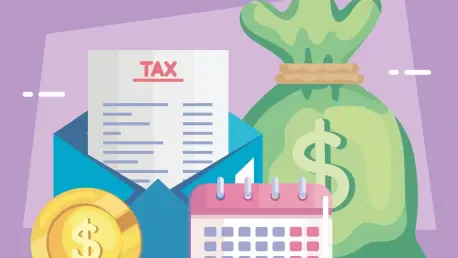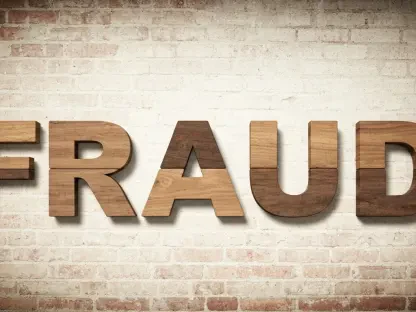Overview of Excise Taxes in Today’s Fiscal Landscape
In an era where governments worldwide grapple with balancing budgets and addressing societal challenges, excise taxes stand out as a critical yet complex revenue source, generating over two trillion dollars annually across the globe. These specific levies, imposed on goods and activities such as cigarettes, alcohol, gasoline, and gambling, play a dual role in both filling public coffers and shaping consumer behavior. As of 2025, the reliance on these taxes remains significant at local, state, and federal levels, though their contribution often represents a small, fluctuating slice of total government revenue. The pressing challenge lies in determining the most effective way to allocate these funds—whether to tie them to specific programs related to the taxed items or to channel them into general budgets for broader use. This report dives into the current state of excise tax policy, exploring the debates, trends, and data that shape allocation strategies in an ever-evolving economic environment.
The significance of excise taxes extends beyond mere revenue generation; they are tools for policy influence, often designed to curb harmful behaviors like smoking or excessive fuel consumption. However, their volatility—driven by shifting consumer habits and technological advancements—raises questions about long-term fiscal planning. This analysis aims to unpack the intricacies of how these funds are managed, examining the arguments for and against earmarking while highlighting the broader implications for public finance. By delving into real-world examples and emerging patterns, the report seeks to provide clarity on a topic that impacts infrastructure, health initiatives, and government stability.
Detailed Analysis of Allocation Strategies and Trends
Understanding Excise Taxes and Their Role in Government Revenue
Excise taxes, defined as targeted levies on specific goods or activities, form a cornerstone of government revenue systems globally. Items like tobacco, alcohol, and gasoline are commonly taxed not only to raise funds but also to discourage overconsumption and offset associated societal costs. Despite their substantial contribution—over two trillion dollars each year—these taxes often account for a minor, unpredictable portion of total public income at various governance levels. Their dual purpose makes them unique: they serve as fiscal instruments while acting as behavioral deterrents, shaping markets and public habits in subtle yet impactful ways.
The volatility of excise tax revenue stems from changing consumption patterns, influenced by health campaigns, environmental policies, and technological shifts. For instance, declining cigarette sales and the rise of electric vehicles have directly affected traditional tax bases, creating uncertainty for planners. This report centers on a pivotal debate within the industry: should these revenues be earmarked for specific programs linked to the taxed products, or should they flow into general funds for unrestricted use? This question underpins much of the fiscal strategy discourse, setting the stage for a deeper exploration of allocation approaches.
The Case for Earmarking Excise Tax Revenue
Benefits of Linking Revenue to Related Programs
Earmarking excise tax revenue—directing it toward programs tied to the taxed product—offers a logical framework for allocation that resonates with both policymakers and the public. For example, fuel taxes frequently support transportation infrastructure, such as road maintenance and public transit systems, reflecting a user-fee model where those who consume contribute directly to related costs. This approach not only ensures that funds address relevant needs but also enhances transparency, as taxpayers can see a clear connection between their contributions and tangible outcomes like smoother highways or upgraded bridges.
Moreover, earmarking builds public trust by aligning government spending with the specific issues created by consumption. The U.S. Highway Trust Fund exemplifies this principle, channeling federal gasoline taxes into national transportation projects. Similarly, many states dedicate a portion of fuel tax revenue to local road repairs, reinforcing the idea that spending should mirror the source of funds. This targeted method fosters accountability, as it provides a measurable link between revenue and results, a factor often lacking in general fund allocations.
Addressing Societal Harms Through Targeted Allocation
Beyond infrastructure, earmarking holds potential for mitigating societal harms caused by taxed products, particularly in health-related domains. Taxes on tobacco and alcohol could fund initiatives like smoking cessation programs or addiction treatment, directly tackling the externalities of consumption. Such allocations embody a sense of fairness, ensuring that revenue generated from harmful behaviors contributes to solutions, thereby reinforcing the social responsibility aspect of these levies.
Despite this potential, global and U.S. data reveal a significant gap in practice. Only a small fraction of countries direct alcohol tax revenue toward health or control programs, and in the U.S., a mere 3.5 percent of tobacco settlement funds currently support cessation efforts. This discrepancy highlights an opportunity for policy reform, where increased earmarking could address pressing public health challenges. By focusing on harm reduction, governments can justify higher taxes while delivering measurable benefits to affected communities, a strategy that merits greater attention.
Challenges and Risks of Earmarking Excise Tax Revenue
The appeal of earmarking is tempered by inherent challenges, primarily the volatility of excise tax bases. Consumption of taxed products like cigarettes and gasoline is declining due to behavioral shifts, policy interventions, and innovations such as electric vehicles. This trend creates uncertainty for programs reliant on these funds, as revenue streams can shrink unexpectedly, disrupting long-term planning and service delivery in critical areas.
Specific cases illustrate these risks vividly. In California, a drop in cigarette sales following regulatory changes led to a revenue shortfall for social programs, straining budgets for initiatives like early childhood services. Similarly, the rise of fuel-efficient and electric vehicles has eroded gasoline tax revenue, threatening transportation funding nationwide. These examples underscore the fiscal peril of linking essential services to unstable income sources, prompting a reevaluation of allocation priorities.
Tying vital public goods like education or healthcare to excise taxes exacerbates these dangers, as their fluctuating nature contrasts with the consistent funding such sectors require. Unlike broader revenue streams like income taxes, excise funds lack the stability needed for sustained investment. Policymakers must therefore exercise caution, balancing the intuitive appeal of earmarking with the practical need for fiscal reliability to safeguard essential programs from sudden shortfalls.
Balancing Earmarking with Fiscal Stability
Navigating the allocation of excise tax revenue involves complex regulatory and policy considerations, often clouded by political motivations. Some governments use these funds for unrelated programs—such as pensions or parks—as a strategy to garner public support, despite lacking a logical connection to the taxed product. This practice can mislead taxpayers and distort fiscal priorities, diverting resources from areas directly impacted by consumption.
Over-reliance on excise taxes for critical services poses another pitfall, especially when compared to more stable revenue sources like income or sales taxes. The narrow base of excise levies makes them vulnerable to rapid declines, as seen in transportation funding challenges. Exploring alternative mechanisms, such as vehicle miles traveled taxes, offers a potential solution to shrinking tax bases, ensuring that infrastructure needs are met without depending solely on traditional fuel levies.
Achieving a balanced approach requires blending earmarking with broader fiscal strategies. While dedicating revenue to related programs can be effective, essential services must draw from more dependable sources to avoid disruption. This hybrid model allows governments to address specific harms and costs while maintaining the flexibility to adapt to economic fluctuations, a critical consideration in modern public finance.
Future Directions for Excise Tax Revenue Allocation
Emerging trends are reshaping the landscape of excise tax revenue, driven by technological advancements and policy shifts. The proliferation of electric vehicles continues to challenge traditional fuel tax models, necessitating innovative funding solutions for transportation infrastructure. Additionally, bans or restrictions on certain products, like menthol cigarettes, further erode tax bases, compelling authorities to rethink revenue strategies.
Adaptive fiscal policies are essential to address these declining bases while sustaining related programs. Governments must anticipate changes in consumer behavior—such as increased health consciousness or environmental awareness—and adjust tax structures accordingly. For instance, expanding taxation to new sectors or products could offset losses, ensuring that funds for harm reduction or infrastructure remain available despite market shifts.
Innovation in taxation and allocation strategies is paramount for long-term sustainability. Policymakers should explore dynamic frameworks that respond to economic and social changes, integrating data-driven forecasts to predict revenue trends. By staying ahead of these transformations, public finance systems can maintain their relevance, supporting societal needs without succumbing to the limitations of outdated excise tax models.
Reflections and Path Forward
Looking back, this report illuminated the multifaceted role of excise taxes as both revenue generators and behavioral influencers, while grappling with their inherent volatility. The analysis revealed a strong case for earmarking funds to programs tied to taxed products, such as fuel taxes for roads or tobacco levies for health initiatives, as a means to enhance transparency and address specific harms. Yet, it also exposed the risks of over-dependence on these fluctuating sources for essential services, advocating for broader taxes to underpin critical public goods.
Moving forward, policymakers should prioritize a strategic blend of earmarking and fiscal caution, directing excise revenue toward related programs while securing stable funding for education and healthcare through other means. Exploring innovative taxation models, like vehicle miles traveled fees, emerged as a viable step to counter shrinking tax bases. Additionally, investing in predictive analytics to anticipate consumption shifts could strengthen allocation planning. These actionable measures, rooted in the insights of this analysis, offer a roadmap for governments to harness excise taxes effectively, ensuring resilience and responsiveness in an unpredictable fiscal landscape.









